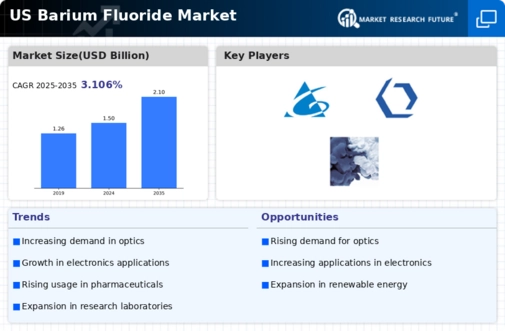The US Barium Fluoride Market is characterized by a landscape of competitive dynamics shaped by varying demand drivers, manufacturing capabilities, and innovation trends. Key players in this market strive to capture significant market shares by optimizing their production processes and enhancing product quality. The barium fluoride sector serves various industries, including optics, electronics, and chemical manufacturing, where it is valued for its unique properties such as low refractive indices and excellent chemical stability.
Organizations are increasingly focused on developing strategic partnerships and expanding their distribution networks to strengthen their position in the market. The competitive landscape is also influenced by regulatory frameworks, supply chain efficiencies, and the adaptation of advanced technologies, all of which dictate the operational strategies of companies involved in the market.
Chemical Associates has established a formidable presence in the US Barium Fluoride Market, capitalizing on its extensive experience and technical expertise. The company is well-regarded for its high-quality products that cater to the needs of various sectors, including pharmaceuticals and advanced materials. The strengths of Chemical Associates lie in its robust customer relationships and commitment to product customization, ensuring that clients receive materials that meet their specific requirements.
With a focus on innovation and an efficient supply chain, the company is positioned to take advantage of market opportunities and respond effectively to shifting consumer demands in the barium fluoride segment. Gulbrandsen holds a notable standing in the US Barium Fluoride Market, leveraging its broad portfolio of products and services that address diverse industrial applications.
Primarily focused on specialty chemicals, Gulbrandsen offers high-purity barium fluoride, which is essential for applications like laser manufacturing and other optical components. The company's strength is evident in its commitment to quality and sustainability, which aligns with modern industry trends. Additionally, Gulbrandsen has engaged in strategic mergers and acquisitions that have bolstered its market presence, allowing it to enhance its product offerings and improve operational efficiencies in the US region.
This proactive approach to growth, alongside a focus on innovation and customer satisfaction, has solidified Gulbrandsen's reputation as a key player in the barium fluoride landscape.














Leave a Comment